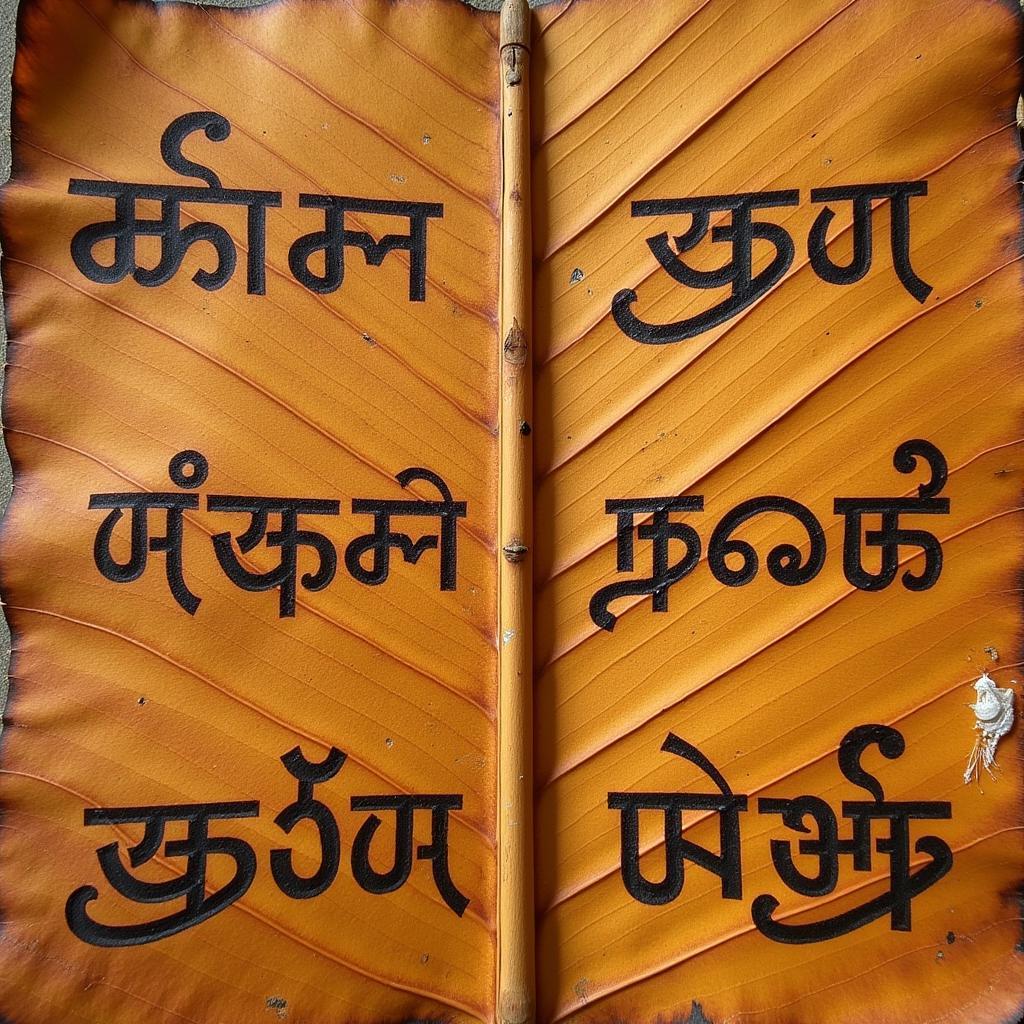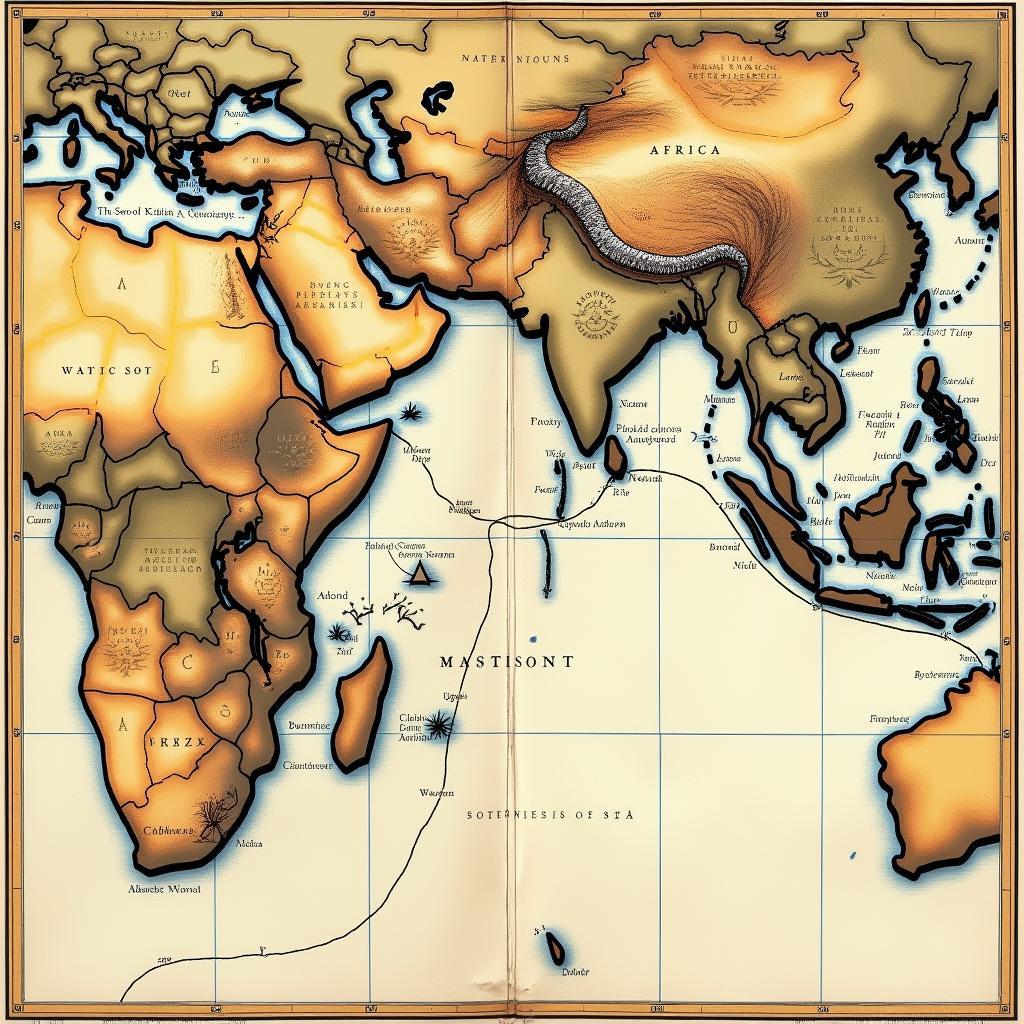Unraveling the Myth: Is African Language Tamil?
The question “African Language Is Tamil?” often pops up in online searches, revealing a curiosity about potential linguistic connections between Africa and Tamil, a language predominantly spoken in South India and Sri Lanka. While it’s fascinating to explore linguistic links across continents, it’s important to clarify that no African language is inherently Tamil.
The phrasing of the search itself hints at a misunderstanding. Africa is a vast continent with thousands of languages grouped into language families like Afro-Asiatic, Niger-Congo, and Nilo-Saharan, each with distinct origins and evolutionary paths. Tamil, on the other hand, belongs to the Dravidian language family, primarily spoken in South Asia.
Dispelling Misconceptions about Language Families
The misconception that an African language might be Tamil likely stems from a lack of understanding about how language families work. Languages within a family share a common ancestor language, much like branches sprouting from the same tree trunk. Over time, these branches diverge, developing unique characteristics while still bearing traces of their shared origin.
For instance, English, Spanish, and Hindi, despite their differences, belong to the Indo-European language family, indicating a shared linguistic ancestor. Similarly, Tamil, Telugu, Kannada, and Malayalam, though distinct, belong to the Dravidian family, pointing to their common linguistic roots in South Asia.
 Ancient Tamil Script on Palm Leaf
Ancient Tamil Script on Palm Leaf
Exploring Possible Influences and Connections
While Tamil is not an African language, exploring potential points of contact between the two linguistic worlds reveals fascinating historical and cultural exchanges. Trade routes connecting South India to East Africa existed for centuries, facilitating the flow of goods, ideas, and people.
These interactions might have led to the borrowing of words and cultural practices. For example, Swahili, a widely spoken language in East Africa, incorporates loanwords from various languages, including Arabic, Portuguese, and potentially even some Dravidian languages like Tamil. However, the presence of loanwords doesn’t signify that one language is a direct descendant of another; it simply demonstrates historical contact and cultural exchange.
 Map of Ancient Trade Routes Connecting Africa and India
Map of Ancient Trade Routes Connecting Africa and India
Celebrating the Diversity of African Languages
Instead of seeking to label an African language as Tamil, let’s shift our focus to appreciating the remarkable linguistic diversity within Africa itself. From the click consonants of the Khoisan languages in Southern Africa to the tonal variations in Yoruba spoken in West Africa, the continent bursts with linguistic richness.
Each language carries within it a unique cultural worldview, a way of life, and a history waiting to be explored. By learning about these languages, we gain a deeper understanding of Africa’s diverse cultures, traditions, and artistic expressions.
“The diversity of languages in Africa is a testament to the continent’s rich cultural tapestry,” notes Dr. Abena Asamoah, a linguist specializing in African languages. “Each language holds centuries of history, knowledge, and cultural nuances, making their preservation crucial.”
Conclusion: Embracing Linguistic Curiosity and Respectful Exploration
While the notion of an “African language is Tamil” might stem from a place of curiosity, it’s essential to approach linguistic connections with accuracy and respect. Africa boasts a vibrant tapestry of languages, each with its own unique history and cultural significance. Let’s celebrate this diversity while acknowledging the distinct origins and evolutionary paths of languages across the globe. For further exploration of African languages and cultures, continue browsing our website or reach out to us. Our team is available 24/7 to assist you. Contact us at +255768904061, kaka.mag@gmail.com, or visit us in Mbarali DC Mawindi, Kangaga, Tanzania.
